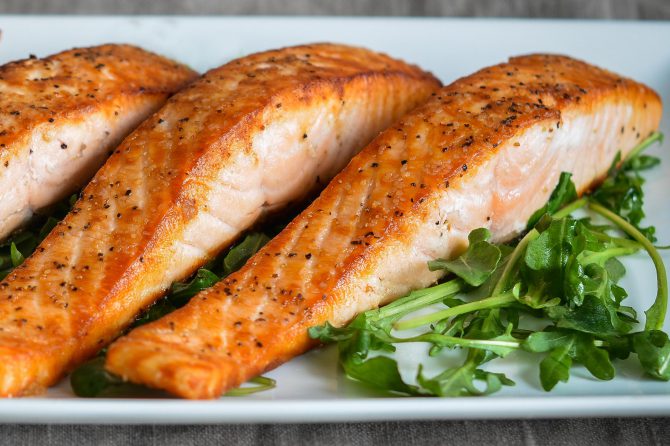The pursuit of excellence in the sport of golf necessitates a comprehensive understanding of the inextricable link between physical and mental well-being. In this article, we embark on an academic exploration of the holistic pathway to enhanced golf performance, delving into the vast array of fitness components that synergistically contribute to a golfer’s success. Through meticulous analysis and expert insights, we unravel the profound significance of strength, flexibility, cardiovascular endurance, nutrition, mental fortitude, and sleep optimization in achieving optimal swing mechanics, power generation, injury prevention, and unparalleled focus in the face of adversity. By shedding light on the multifaceted benefits of embracing a holistic approach, we aim to empower golfers with the knowledge and tools to unlock their full potential, maximize their enjoyment on the course, and cultivate a healthy and active lifestyle that extends beyond the boundaries of the game.
1. Physical Fitness: Strength Training for Enhanced Swing Mechanics and Power Generation
### Strength Training: The Foundation for Enhanced Swing Mechanics and Power Generation
Strength training is a vital pillar of golf fitness that significantly enhances swing mechanics, promotes power generation, and minimizes injury risk. Incorporating a comprehensive and progressive strength training program into a holistic fitness routine can yield numerous benefits for golfers.
Improves Muscle Balance and Coordination:
Strength training exercises strengthen various muscle groups, improving overall muscle balance and coordination. Balanced muscle development ensures a proper golf swing sequence, allowing golfers to generate power and control the clubhead throughout the downswing.
Enhances Rotational Power:
Targeted exercises for core and rotational muscles, such as planks, Russian twists, and medicine ball throws, strengthen these regions and improve rotational power. Increased rotational power translates to greater clubhead speed and distance for more effective shots.
| Exercise | Sets | Reps | Rest |
|---|---|---|---|
| Plank | 3 | 30 seconds | 30 seconds |
| Russian Twist | 3 | 20 repetitions | 20 seconds |
| Medicine Ball Throw | 2 | 10 repetitions | 1 minute |
Reduces Risk of Injury:
By strengthening muscles and connective tissues, strength training helps reduce the risk of golf-related injuries. Strong golfers are better equipped to withstand the repetitive impact and rotational forces experienced during the golf swing, minimizing the likelihood of muscle strains, sprains, and other musculoskeletal issues.
2. Flexibility and Mobility: Exercises to Optimize Range of Motion and Prevent Injuries
Flexibility and mobility are essential components of golf fitness, contributing to optimal swing mechanics, injury prevention, and enhanced performance. Here are some exercises to improve flexibility and mobility in key areas for golfers:
1. Dynamic Stretching:
- Arm Circles: Rotate your arms in wide circles forward and backward to improve shoulder mobility.
- Leg Swings: Swing your legs forward and backward, side to side, to increase hip flexibility.
2. Static Stretching:
- Hamstring Stretch: Sit on the floor with your legs extended, toes pointing forward. Reach down and touch your toes, holding for 30-60 seconds.
- Calf Stretch: Stand facing a wall, placing one foot behind the other slightly bent. Lean into the wall until you feel a stretch in your calf.
3. Foam Rolling and Massage:
- IT Band Roll: Use a foam roller to massage the iliotibial band on the outside of your thigh, improving flexibility and reducing tension.
- Quad Massage: Sit on the floor and massage your quadriceps using a massage ball or foam roller, promoting greater flexibility and recovery.
By incorporating these flexibility and mobility exercises into your golf fitness routine, you can enhance your range of motion, improve swing mechanics, and reduce the risk of injuries on the course.
3. Cardiovascular Conditioning: Aerobic Activities to Improve Stamina and Recovery
###
Sustaining a high level of golf performance necessitates a strong cardiovascular foundation. Regular aerobic exercise strengthens the heart and lungs, enabling golfers to swing more powerfully and consistently throughout a round. Improved stamina delays fatigue, allowing golfers to maintain focus and precision during crucial shots. It also enhances recovery between shots and rounds, reducing muscle soreness and overall fatigue.
Aerobic activities that can significantly benefit golfers include:
- Running
- Cycling
- Swimming
- Walking
- Dancing
These exercises elevate the heart rate for a sustained period, fostering cardiovascular adaptations. Aim for at least 150 minutes of moderate-intensity or 75 minutes of vigorous-intensity aerobic activity per week. By incorporating aerobic exercise into their routines, golfers can reap the rewards of increased stamina, faster recovery, and enhanced overall performance.
Benefits of Cardiovascular Conditioning for Golfers
- Enhanced Swing Mechanics: Improved cardiovascular health empowers golfers to swing the club with greater speed and power. A strong cardiovascular system ensures adequate oxygen delivery to muscles, enabling them to contract forcefully and explosively during the swing.
- Improved Stamina and Endurance: Golf is a physically demanding sport that requires sustained effort over multiple holes. Aerobic conditioning strengthens the heart and lungs, enabling golfers to endure the rigors of the game without succumbing to fatigue.
- Improved Recovery: Regular aerobic exercise promotes blood flow and oxygenation to muscles, facilitating faster recovery between shots and rounds. This reduced muscle soreness and stiffness, allowing golfers to perform at their best consistently.
4. Nutritional Considerations: Fueling Performance and Supporting Recovery
Nutrition plays a vital role in optimizing golf performance and promoting recovery. A well-balanced diet provides the fuel necessary for explosive swings, power generation, and sustained endurance on the course.
Macro and Micronutrients for Golfers
- Carbohydrates: The primary energy source for golfers, carbohydrates provide glycogen for muscle contractions.
- Protein: Essential for muscle repair and growth, protein supports recovery and ensures optimal muscle function.
- Fat: Provides energy, supports hormone production, and aids in nutrient absorption.
- Vitamins and Minerals: Crucial for overall health and athletic performance, these micronutrients contribute to energy metabolism, muscle recovery, and immune function.
Hydration and Meal Timing
- Hydration: Maintaining hydration is essential for peak performance. Aim to consume water or sports drinks regularly throughout the day, especially before and during rounds.
- Meal Timing: Time meals appropriately to maximize energy levels and support recovery. Pre-round meals should provide sustained energy, while post-round meals should replenish glycogen stores and promote muscle recovery.
Supplementation: To Consider, Not Mandatory
- Creatine: May enhance power output and reduce muscle fatigue.
- Beta-Alanine: May buffer lactic acid and delay muscle fatigue.
- Caffeine: Can improve alertness and focus, but use cautiously due to potential side effects.
Remember, consult with a registered dietitian or healthcare professional for personalized nutritional guidance tailored to your individual needs and training program.
5. Mental and Emotional Fitness: Strategies for Focus, Stress Management, and Sleep Optimization in Golf
Mental and emotional fitness are inseparable in golf. When they are in harmony, a seamless flow that eliminates the gap of overthinking, emotional outbursts, or loss of focus, can be achieved. This state is required for performance enhancement and longevity.
Stress, tension, and distractions can creep in at any moment in golf, but how we cultivate strategies to manage these mental challenges can make all the difference. Mindfulness techniques, such as deep breathing, meditation, and progressive muscle relaxation, can help calm the mind, improve focus, and increase resilience to distractions. Visualising successful outcomes, setting realistic goals, and practicing self-talk is also paramount.
Sleep has a significant impact on energy, recovery, and performance. Optimizing sleep habits for golf involves the formation of consistent sleep-wake cycles, even on weekends. Creating a conducive sleep environment that involves a well-ventilated, dark, and quiet room, can promote restful sleep. Additionally, avoiding caffeine and alcohol before bed, as well as regulating screen time, can improve sleep quality. The benefits of a solid night’s rest extend beyond the course; it’s pivotal for overall health and well-being.
the holistic approach to golf fitness outlined in this article provides a roadmap for golfers to achieve optimal performance and longevity. By integrating physical, mental, and emotional well-being into their training regimens, golfers can unlock their full potential on the course while cultivating a healthy and fulfilling lifestyle that extends beyond the game. Embracing this comprehensive approach will empower golfers to maximize their enjoyment of the sport, optimize their swing mechanics, enhance their power generation, and prevent injuries. Ultimately, the holistic pathway to enhanced golf performance empowers individuals to lead healthier, more fulfilling lives both on and off the greens.




